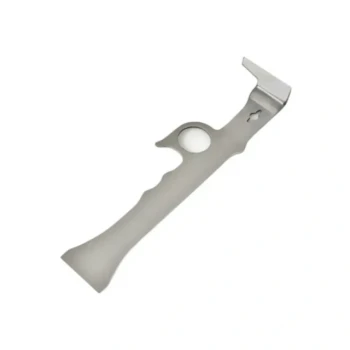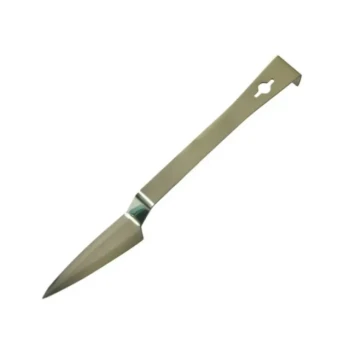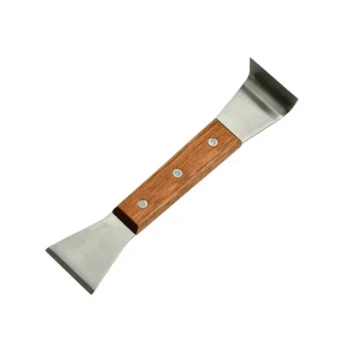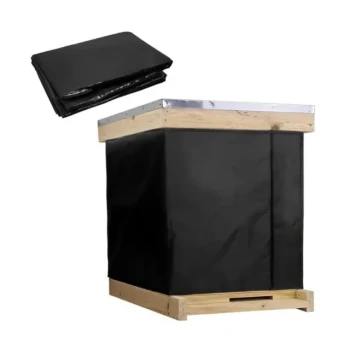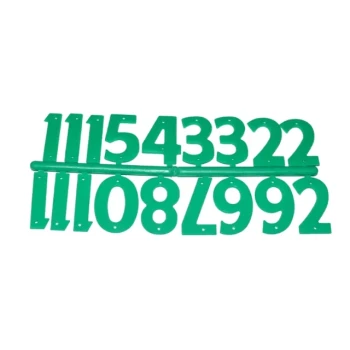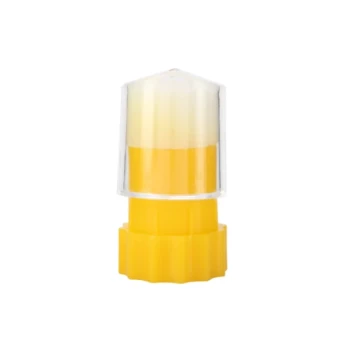In modern beekeeping, bee boxes come in three standard heights: deep, medium, and shallow. While the length and width are standardized to fit on top of each other, the height determines the box's purpose, honey capacity, and most importantly, its weight when full.
The core decision you face when choosing a bee box size is a direct trade-off between honey capacity per box and the physical weight you are willing and able to lift.
The Anatomy of a Modern Beehive
When people discuss bee box sizes, they are almost always referring to the components of a Langstroth hive. This is the most common hive design, consisting of a stack of interchangeable boxes, often called "supers."
Each box holds a set of frames where bees build comb, raise their young, and store honey. The ability to stack and interchange these boxes is what makes the system so flexible.
A Closer Look at Bee Box Dimensions
The primary difference between the boxes is their height. This dictates their primary role within the hive.
Deep Super (9-5/8 inches)
The deep super is the largest and heaviest of the boxes. It provides the maximum space for the colony to operate.
Its most common use is as the brood chamber—the bottom-most box where the queen lays her eggs and the colony raises new bees.
Medium Super (6-5/8 inches)
The medium super is often considered the most versatile and popular choice, especially for hobbyist beekeepers.
It strikes a balance between providing adequate space and being a manageable weight. Many beekeepers use medium boxes for both their brood chambers and their honey supers (the boxes used for honey collection).
Shallow Super (5-5/8 inches)
The shallow super is the lightest option available. It holds the least amount of honey but is the easiest to handle.
Beekeepers use these almost exclusively as honey supers, as their small size is not ideal for a brood chamber. They are particularly favored for producing comb honey.
Understanding the Trade-offs: Weight vs. Efficiency
Choosing a box size is less about the bees—who will adapt to any size—and more about the beekeeper's management style and physical ability.
The Critical Weight Factor
A box full of honey is deceptively heavy. This is often the single most important factor in a beekeeper's decision.
- A full deep super can weigh 80-90 pounds (36-41 kg).
- A full medium super weighs around 50-60 pounds (23-27 kg).
- A full shallow super weighs a much more manageable 30-40 pounds (14-18 kg).
The Management Factor
Using a single box size for your entire hive (for example, all mediums) creates a system of complete interchangeability.
This simplifies management significantly. Any frame can be moved to any box, which is useful for equalizing colony strength or making splits. A mixed-size hive does not offer this flexibility.
Making the Right Choice for Your Hive
Your decision should be based on your physical comfort and your goals for the hive.
- If your primary focus is maximum efficiency: Use deep boxes for the brood chamber and medium or shallow boxes for honey supers.
- If your primary focus is saving your back and simplifying equipment: Run your entire hive using only medium supers for both brood and honey.
- If your primary focus is having the lightest possible weight for honey: Use deeps or mediums for the brood chamber and shallow supers for honey collection.
Ultimately, the best system is the one you can manage safely and consistently throughout the season.
Summary Table:
| Box Type | Height | Primary Use | Full Weight (Approx.) |
|---|---|---|---|
| Deep Super | 9-5/8 inches | Brood Chamber | 80-90 lbs (36-41 kg) |
| Medium Super | 6-5/8 inches | Brood & Honey (Versatile) | 50-60 lbs (23-27 kg) |
| Shallow Super | 5-5/8 inches | Honey Super (Comb Honey) | 30-40 lbs (14-18 kg) |
Optimize your beekeeping operation with the right equipment from HONESTBEE. We supply durable, high-quality bee boxes and a full range of beekeeping supplies to commercial apiaries and equipment distributors. Our wholesale-focused operations ensure you get the reliable gear you need to manage your hives efficiently and protect your investment. Contact HONESTBEE today to discuss your needs and request a quote!
Visual Guide

Related Products
- Langstroth Bee Hives Bee Keeping Box for Beginners Beekeeping
- Wholesales Dadant Size Wooden Bee Hives for Beekeeping
- Professional Insulated Plastic Bee Hives
- HONESTBEE Advanced Ergonomic Stainless Steel Hive Tool for Beekeeping
- Solid Bottom Board Australian Pine Wood Langstroth Bottom Board for Wholesale
People Also Ask
- What is the best type of bee hive for beginners? Start with the Proven Langstroth Standard
- How does the ease of access differ between 8-frame and 10-frame hives? Choose the Right Hive for Your Body
- How does the orientation of the hive sides benefit comb construction? Ensure Straight, Movable Combs for Easier Hive Management
- Should a beginner try a different type of hive? Start with a Langstroth for a solid foundation.
- What are the key features of the Langstroth beehive? A Guide to the Standard for Modern Beekeeping



